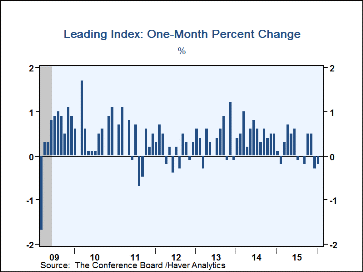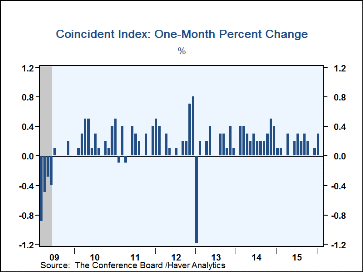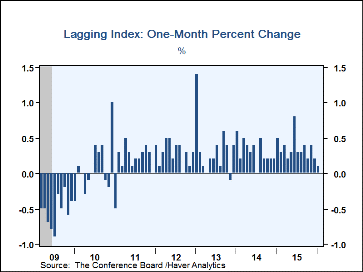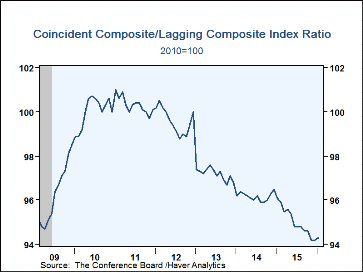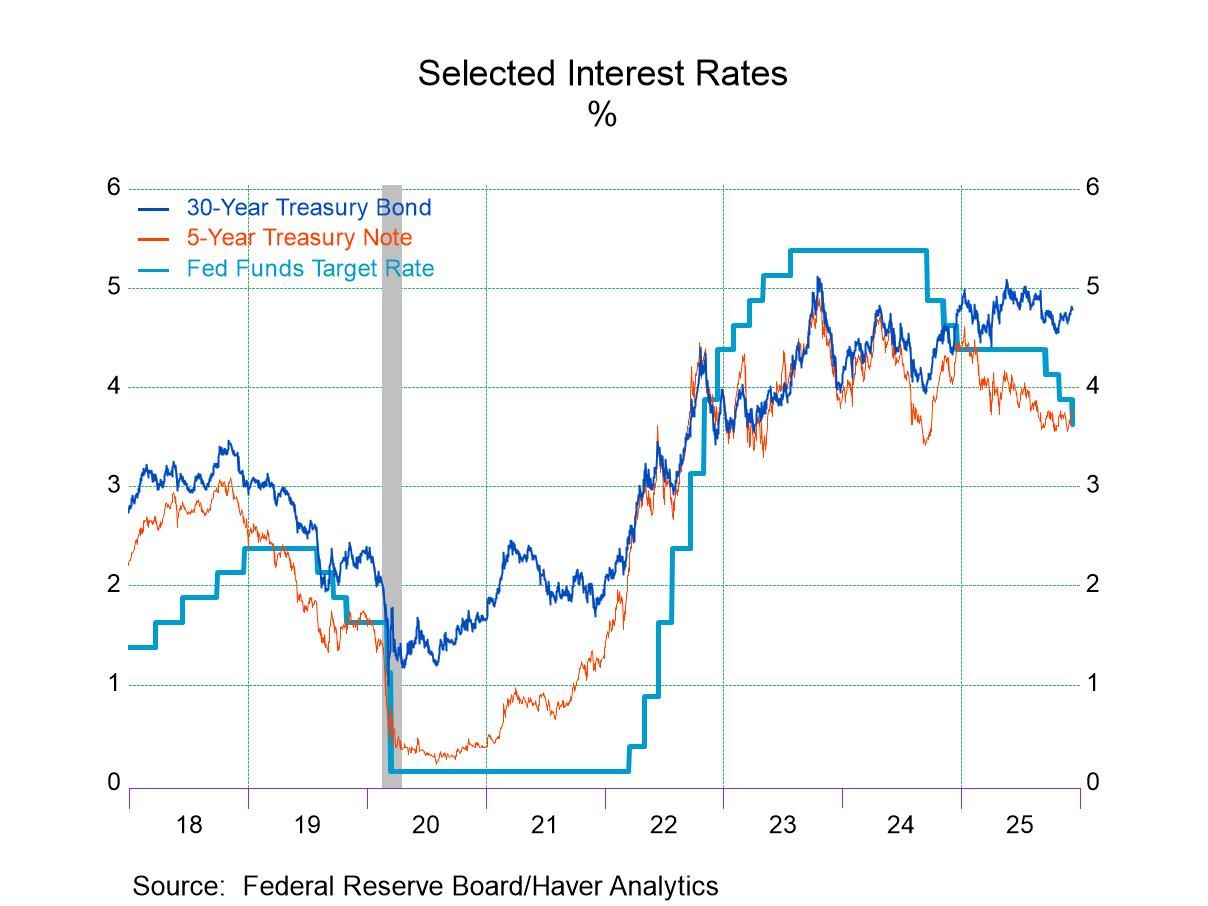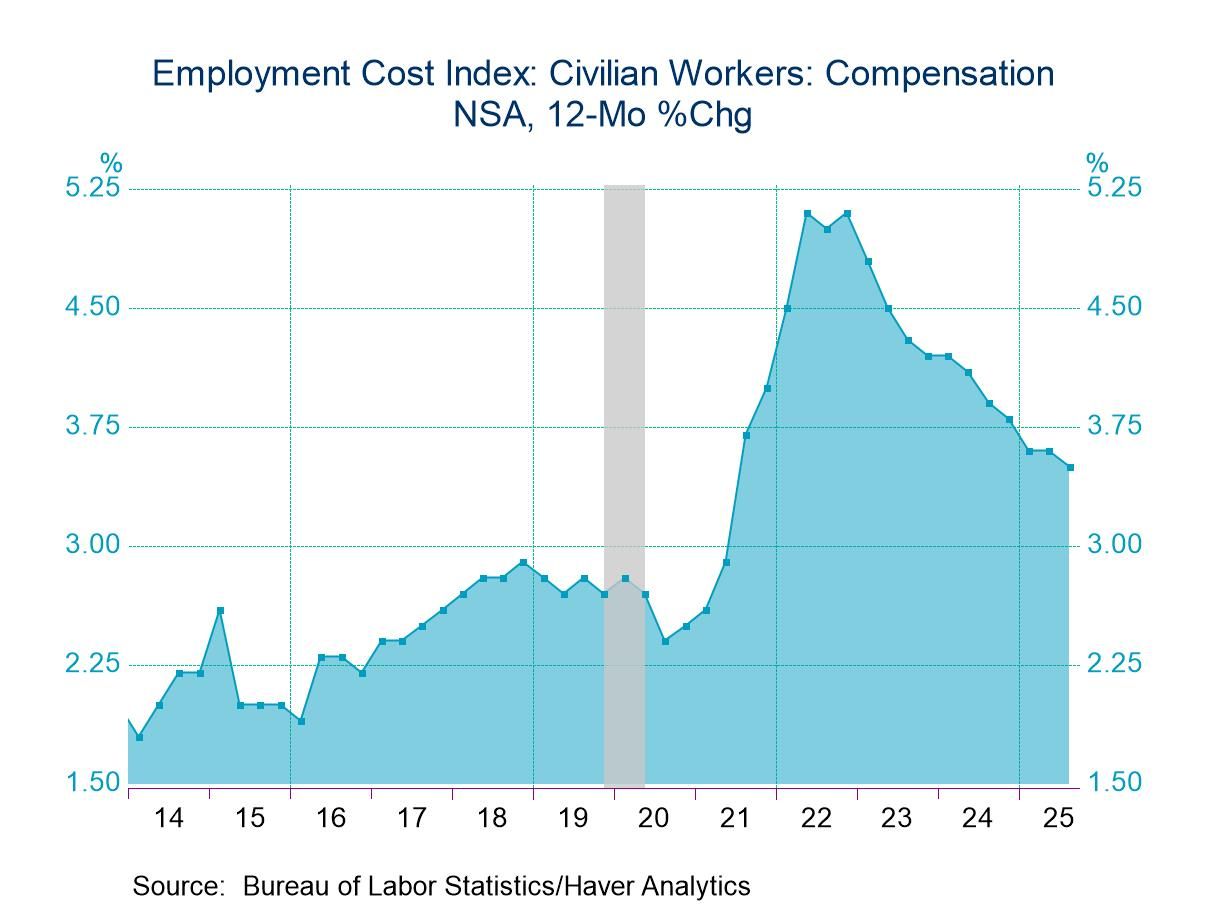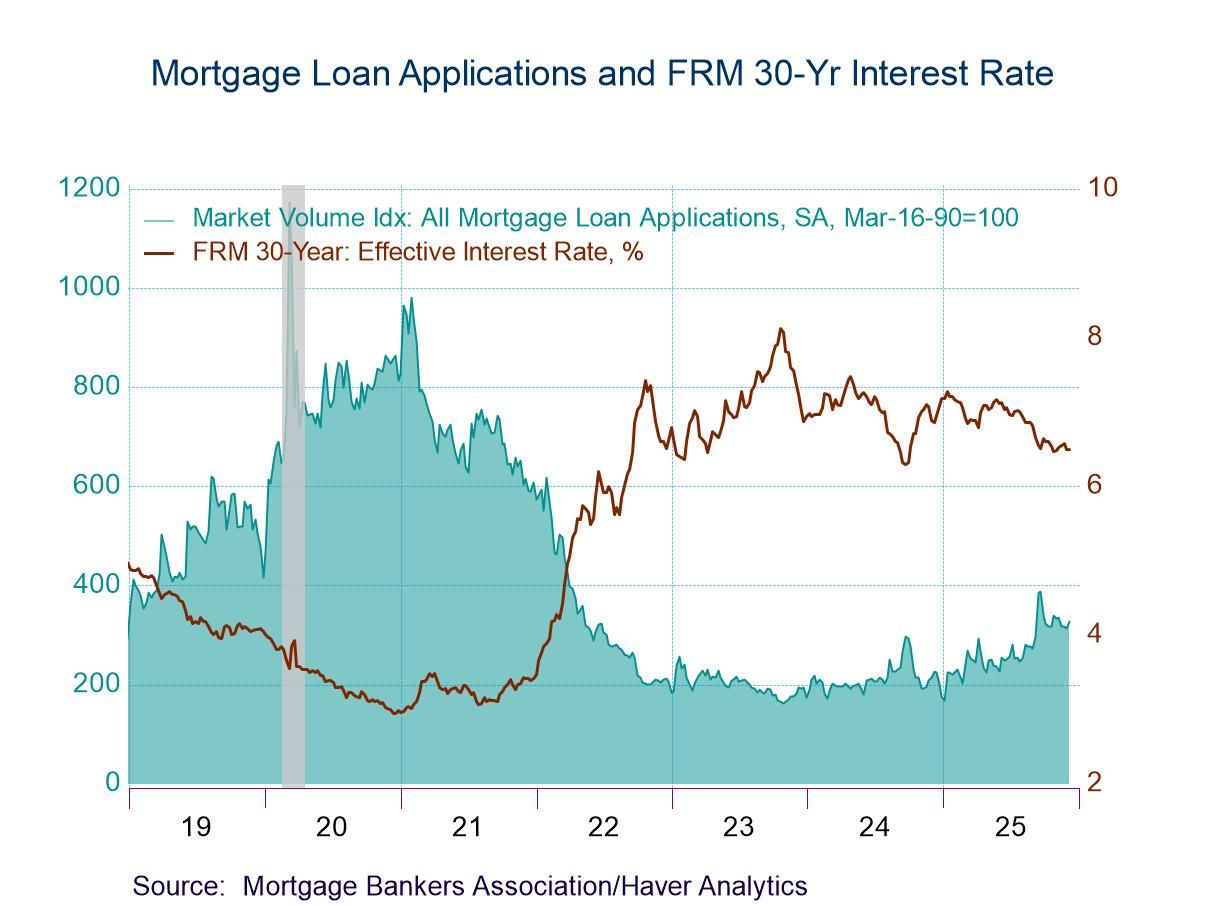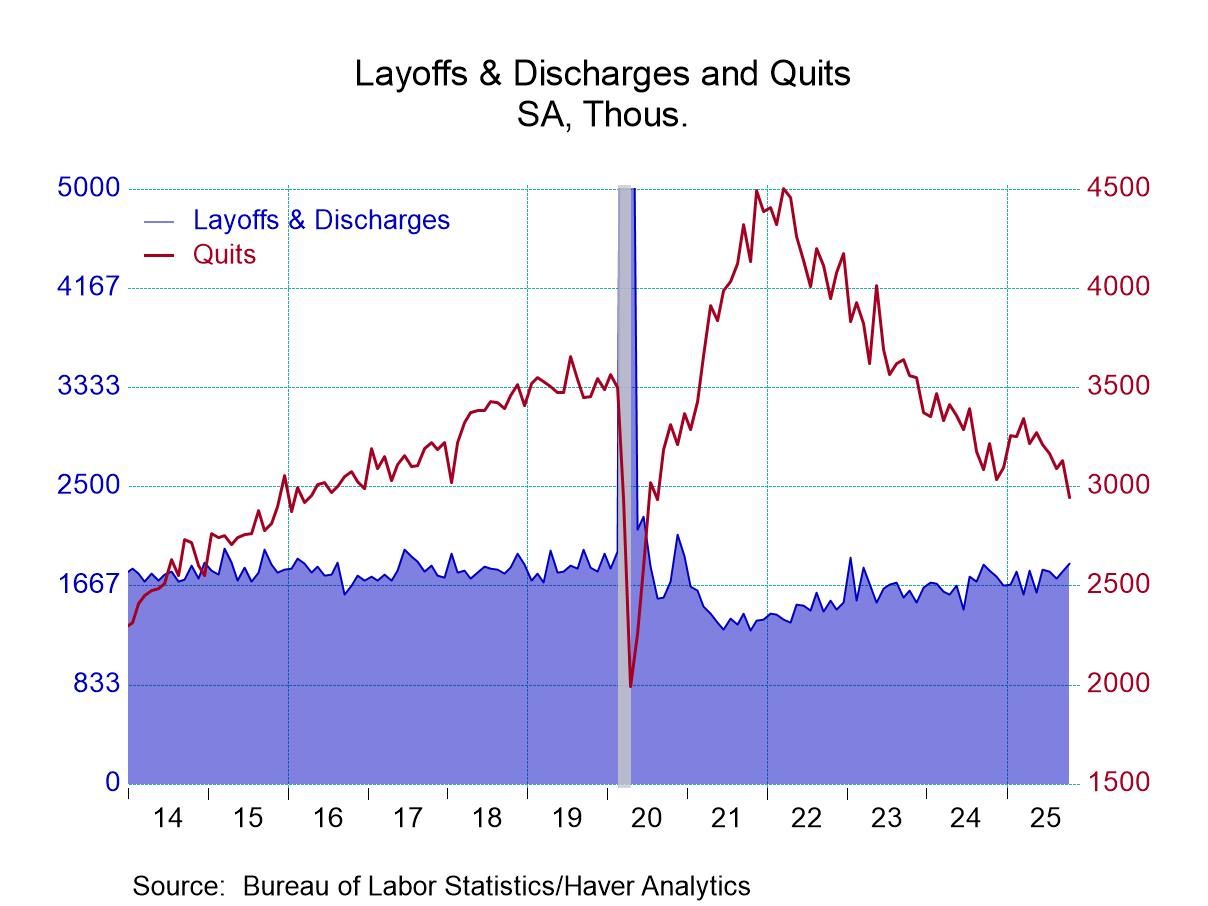 Global| Feb 18 2016
Global| Feb 18 2016U.S. Index of Leading Indicators Falls for a Second Month
by:Tom Moeller
|in:Economy in Brief
Summary
The Conference Board's Index of Leading Economic Indicators fell 0.2% in January (+2.2% y/y), following a revised 0.3% December decline. The fall matched expectations in the Action Economics Forecast Survey. The three-month change in [...]
The Conference Board's Index of Leading Economic Indicators fell 0.2% in January (+2.2% y/y), following a revised 0.3% December decline. The fall matched expectations in the Action Economics Forecast Survey. The three-month change in the index fell to zero, its weakest reading since September. Lower stock prices, higher initial jobless insurance claims, a weaker ISM new orders index and fewer building permits accounted for the decline. These losses were offset by a steeper interest rate yield curve, a longer workweek, more nondefense capital goods orders, the leading credit index and improved consumer expectations for business & economic conditions.
The coincident index improved 0.3% (1.8% y/y) after an unrevised 0.1% uptick in December. The three-month rate growth rate rose to 1.4% (AR). Each of the component series contributed to the rise in the overall index, including industrial production, nonfarm payrolls, personal income less transfers and manufacturing & trade sales.
The lagging index ticked 0.1% higher (3.7% y/y) after an unrevised 0.2% gain. The three-month growth rate slowed to 2.7% (AR), the weakest growth since August. More C&I loans, a higher prime interest rate charged by banks, a higher consumer installment credit/personal income ratio and a stronger services CPI were the largest contributors to the index rise. These were offset by a shorter average duration of unemployment and lessened unit labor costs per unit of output.
The ratio of coincident to lagging indicators also is a leading indicator of economic activity. It measures excesses in the economy relative to its ongoing performance. This ratio rose slightly in January from its December low.
The Conference Board figures are available in Haver's BCI database; the components are available there, and most are also in USECON. The forecast figures for the Consensus are in the AS1REPNA database. Visit the Conference Board's site for coverage of leading indicator series from around the world.
| Business Cycle Indicators (%) | Jan | Dec | Nov | Jan Y/Y | 2015 | 2014 | 2013 |
|---|---|---|---|---|---|---|---|
| Leading | -0.2 | -0.3 | 0.5 | 2.2 | 4.3 | 5.8 | 2.9 |
| Coincident | 0.3 | 0.1 | 0.0 | 1.8 | 2.5 | 2.6 | 1.4 |
| Lagging | 0.1 | 0.2 | 0.4 | 3.7 | 3.7 | 3.7 | 3.9 |
Tom Moeller
AuthorMore in Author Profile »Prior to joining Haver Analytics in 2000, Mr. Moeller worked as the Economist at Chancellor Capital Management from 1985 to 1999. There, he developed comprehensive economic forecasts and interpreted economic data for equity and fixed income portfolio managers. Also at Chancellor, Mr. Moeller worked as an equity analyst and was responsible for researching and rating companies in the economically sensitive automobile and housing industries for investment in Chancellor’s equity portfolio. Prior to joining Chancellor, Mr. Moeller was an Economist at Citibank from 1979 to 1984. He also analyzed pricing behavior in the metals industry for the Council on Wage and Price Stability in Washington, D.C. In 1999, Mr. Moeller received the award for most accurate forecast from the Forecasters' Club of New York. From 1990 to 1992 he was President of the New York Association for Business Economists. Mr. Moeller earned an M.B.A. in Finance from Fordham University, where he graduated in 1987. He holds a Bachelor of Arts in Economics from George Washington University.


